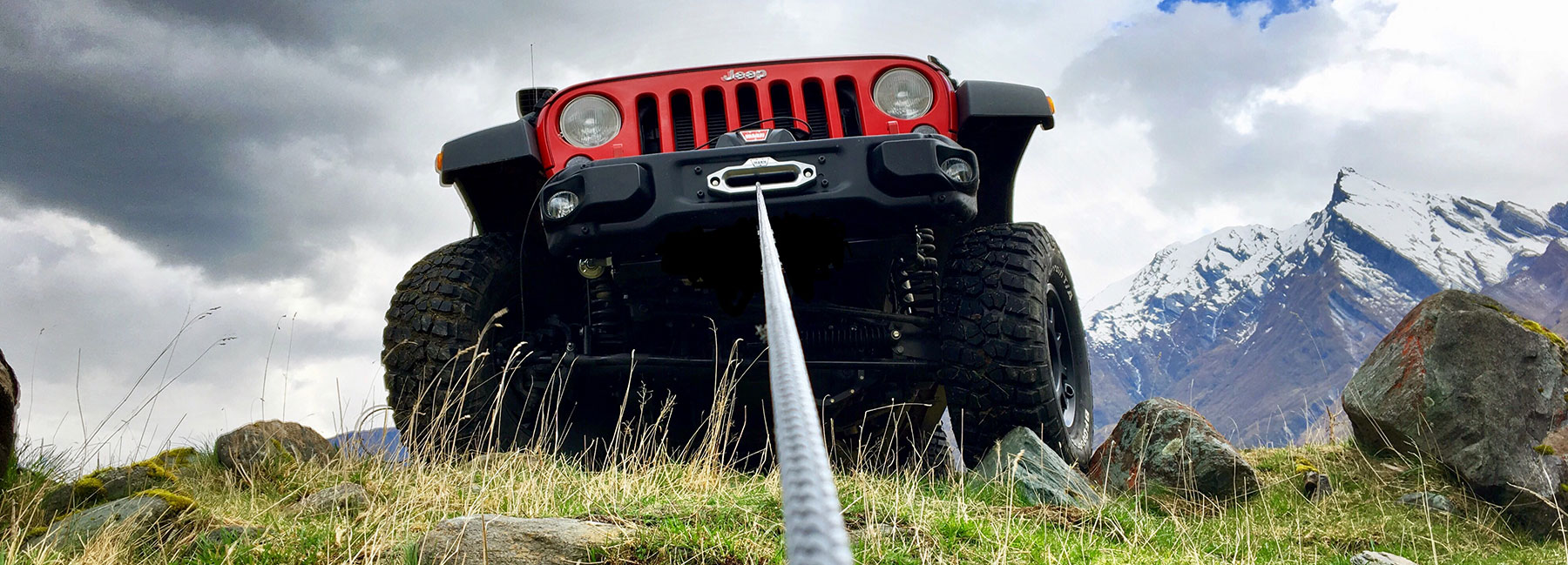Top 10 Off-Road Tips
(1) Check Your Vehicle’s Health
Before departing on your 4×4 adventure make sure to check the overall health of your vehicle. Create a checklist of things you should review prior to departure. These items may include:
- Has your vehicle received regular service?
- Is your vehicle leaking any fluids?
- Are my tires holding air? Do they have any bulges or missing pieces?
- Is my full-size spare tire in good condition?
- Are my hoses and fittings secure?
- Did you pack the proper recovery equipment?
- Do have enough fuel for this adventure?
- Do you need a tool kit or need extra parts?
- Do you have a first-aid kit, communication devices, extra food and water
(2) Wear Your Seatbelt
Always wear your seatbelt, on-road and off-road. The exception to this is if you are crossing a river or stream, ensuring that you can quickly evacuate the vehicle.
(3) Never Travel Alone

Off-roading alone should be your last resort. If you must go solo, let someone know where you’ll be and check in with them on a regular schedule.
(4) Get the Right Communications
There are two types of communications: communications to other Jeep vehicles on the trail and communications to the outside world. Communicating from Jeep to Jeep is typically done with a two-way radio. The best type of two-way radio is one with GMRS technology (CB radios are a thing of the past). GMRS radios come in different wattages, the higher the wattage the longer the range. Two-way radios are also a good way to communicate with a spotter outside the vehicle giving you guidance.
While two-way radios are great for talking amongst your trail group, they often don’t have the capability to communicate to emergency services, friends or family who are back home. You should also consider carrying a satellite-based communication device like a Garmin inReach, which allows you to send messages (via a satellite network) or a satellite phone, which also uses a satellite network. Both devices can still be used when you no longer have cell coverage.
(5) Choose the Right Tire
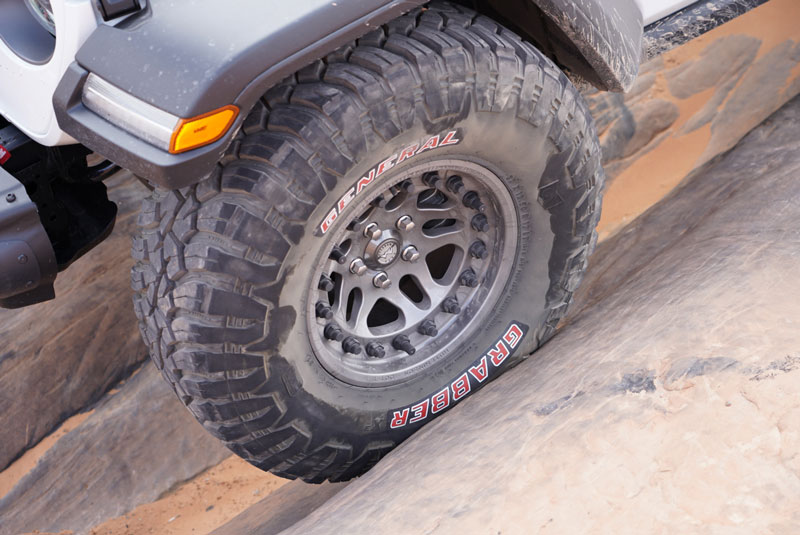
Choosing the right tire is one of the most important choices you’ll make when preparing your Jeep 4×4 for off-road use. Most people select either all-terrain or mud-terrain tires. Other tire choices exist, but these two types of tires cover the needs of 99.9% of all off-roaders needs.
Bigger isn’t always better and mud-terrain tires are not always the better option. How a tire looks won’t get you over the rock, through the mud, or to the end of the trail. Tire performance that matches your driving style and the terrain you’ll be spending most of your time in are the most important aspects of tire selection. Research, talk to other Jeep owners, and above all be honest with yourself about what you need from your tire.
(6) Understand Off-Road Tire Pressure
Lowering the tire pressure or airing down can offer a smoother ride while driving off-road. It also expands your tire’s footprint, resulting in better traction over rocks and loose terrain. The type of terrain you’ll be in will dictate how much to air down. It’s a good idea to consult a trail guide before airing down if you are unsure of the proper pressure.
(7) Plan Ahead for Terrain You Will Encounter
Exploring new places and conquering challenges that most of your friends wouldn’t even dream of can be very rewarding, but with all that reward comes a great deal of risk. Off-road trails will be unpredictable, terrain will vary, and conditions can change in the blink of an eye.
Be prepared for the terrain you’ll encounter. This means not only your vehicle, but mentally and physically prepared as well. Stick to established routes and follow your plan. Plan ahead and know what type of terrain you’ll encounter to minimize the impact of unneeded trail damage.
(8) Be a Low Impact Traveler
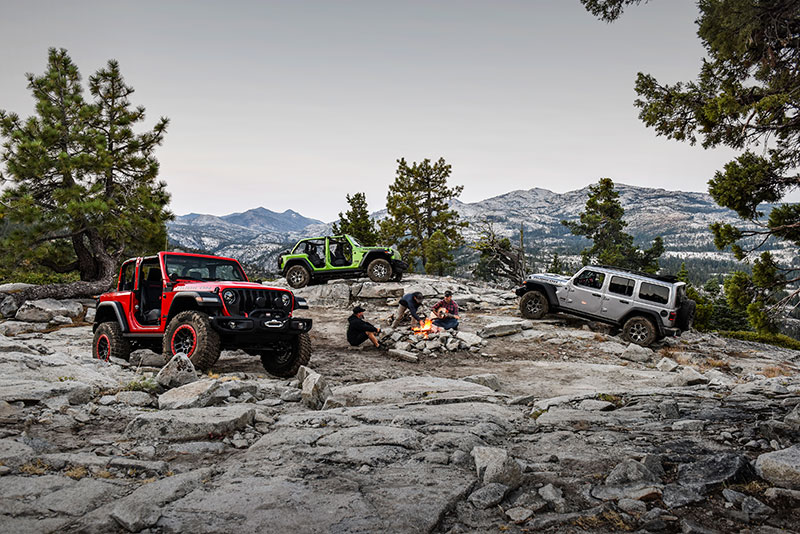
Whenever you embark on an off-road adventure, you should always remember the importance of proper planning and low impact travel. We’ve all heard pack it in; pack it out and you should follow that mantra every time you head out on an adventure. We only have one Earth, so you better treat it right. Your access to trails depends on responsible land use.
Take all trash and rubbish home with you.
Minimize the impact of your campfires by adhering to all fire restrictions.
(9) Climb Hills Like a Pro
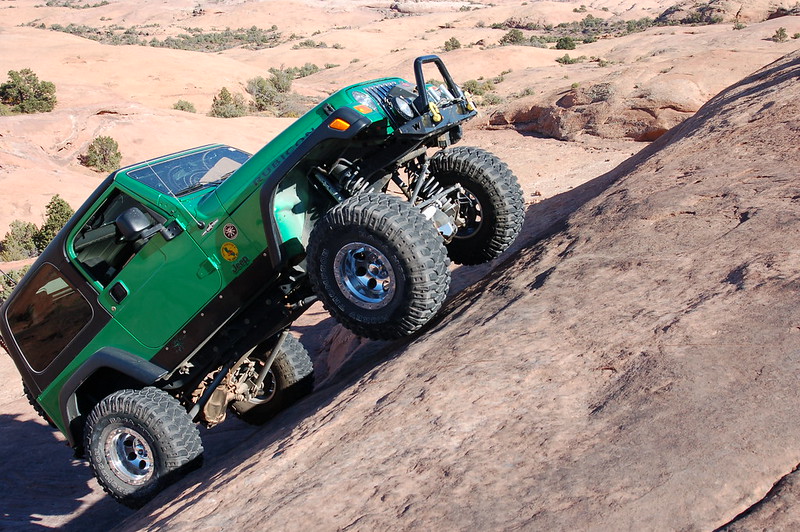
Large rocks and deep mud are the first things to come to mind when thinking about harder trail
rides. People often forget about hills, and they can be even more daunting than you expect when first tackling a trail. If you don’t feel confident that you and your vehicle can make it up the hill, then don’t try it.
Make sure to scout the hill’s crest by foot so you know exactly what’s on the other side.
Lock your differentials. You’ll need all the traction you can get.
Use the short run up to the slope as an opportunity to gain extra momentum that may be needed to clear the hill.
Point your vehicle straight up the hill. Take the most direct route up.
Keep a constant, steady acceleration. Choose a gear that will generate the most torque without losing traction. Depending on the length & steepness of the hill you may need to choose a higher gear.
If your vehicle stalls, put it in reverse and back straight down the hill. Never try to turn around on a hill; it increases the likelihood of your vehicle rolling.
Slow or stop at the top. Ease up on the accelerator as you approach the crest of a hill to avoid launching your vehicle into orbit, but make sure you still have enough momentum to reach the top. At the top of the hill, come to a full stop so you can evaluate the descent.
(10) Successfully Navigate Rock Obstacles
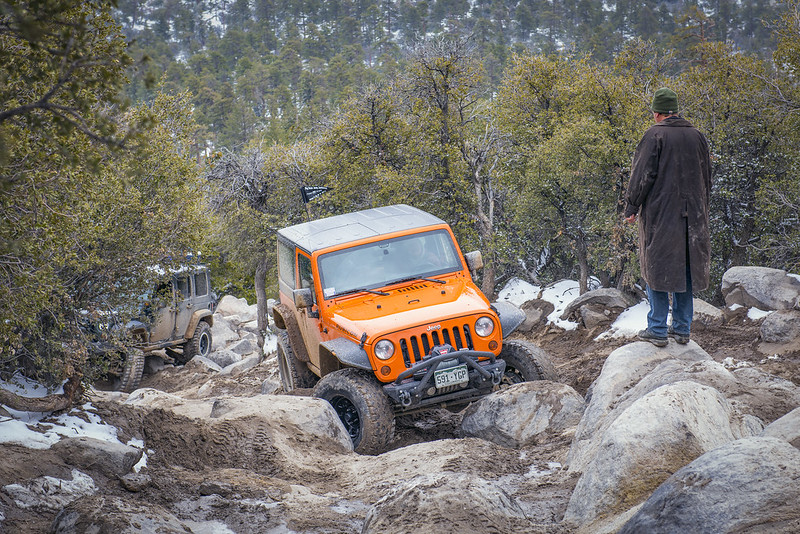
Rocks are arguably the most unforgiving terrain you’re likely to encounter on the trail. Rock crawling requires great caution and is done in a low gear at a pace slower than most people walk. Torque is much more important than power when it comes to successfully navigating the rocks and speed is not your friend.
Controlled throttle and braking are vital to successfully navigating rock. If your vehicle has 8 inches (20cm) of ground clearance, you will not be able to clear rocks taller than that under your vehicle. Choose the proper line that keeps your vehicle as level as possible with all tires on the ground. Keep in mind that: The best line may mean putting your tires on the tallest rocks.
You should avoid sharp and jagged rocks that may puncture the sidewall of your tires.
Airing down will help your tires envelop objects for greater traction.
It may be difficult to locate the proper line from behind the steering wheel. A trusted, experienced spotter can save you from injuring yourself or causing costly damage to your vehicle.
